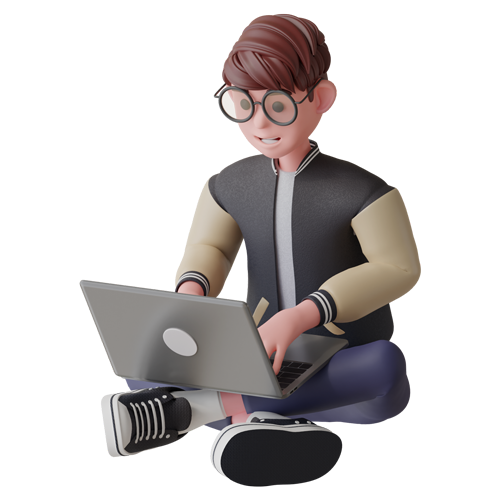2D or 3D Animation: Choosing the Best Style for Your Project | Vozo Animation

Animation has evolved tremendously over the years, becoming a vital tool for storytelling, marketing, education, and entertainment. Whether it’s a dynamic explainer video for your business or a captivating visual for a film, animation can transform ordinary ideas into engaging experiences. If you are planning to create animated content, you might be wondering: Should I choose 2D or 3D animation? At Vozo Animation, we help clients navigate this decision by exploring the unique advantages of both styles.
Understanding 2D Animation
2D animation, short for two-dimensional animation, is the traditional form of animation where characters, backgrounds, and objects are created on a flat plane. It has a rich history, originating from hand-drawn techniques and evolving into digital methods with the help of software like Adobe Animate and Toon Boom Harmony.
Advantages of 2D Animation
-
Cost-Effective: Creating 2D animations generally requires less budget than 3D because it doesn’t demand complex modeling or rendering.
-
Faster Production: 2D animations are quicker to produce, making them ideal for explainer videos, marketing campaigns, and educational content.
-
Stylized Visual Appeal: 2D animation allows for unique artistic styles, from cartoons to flat vector designs, giving your brand a distinctive visual identity.
-
Simplicity in Storytelling: The straightforward nature of 2D animation makes it easier to convey messages clearly and effectively.
Ideal Uses of 2D Animation
-
Explainer videos
-
Marketing and social media content
-
Educational tutorials
-
Mobile and web applications
At Vozo Animation, we excel in creating engaging 2D animations that are visually appealing and effectively communicate your message, ensuring your audience stays hooked from start to finish.
Exploring 3D Animation
3D animation, or three-dimensional animation, brings objects and characters to life in a virtual 3D space. Unlike 2D animation, which operates on a flat surface, 3D animation involves modeling, texturing, rigging, and rendering, allowing for more realistic visuals. Tools like Autodesk Maya, Blender, and Cinema 4D are commonly used in the creation of 3D animation.
Advantages of 3D Animation
-
Realistic and Immersive: 3D animation offers depth, lighting, and textures that create lifelike visuals, making it ideal for games, films, and product visualizations.
-
Versatility: Once a 3D model is created, it can be reused, rotated, and animated in multiple scenes, saving time in long-term projects.
-
Enhanced Storytelling: Complex camera angles, dynamic movements, and realistic effects allow for powerful narrative experiences.
-
Interactive Capabilities: 3D animation is perfect for virtual reality (VR), augmented reality (AR), and interactive applications, offering a more engaging user experience.
Ideal Uses of 3D Animation
-
Feature films and CGI movies
-
Video game design
-
Product demos and architectural visualization
-
Virtual and augmented reality experiences
At Vozo Animation, our 3D animation team brings imagination to life with stunning visuals, ensuring your project captures attention and delivers a memorable impact.
2D vs. 3D Animation: Key Differences
When choosing between 2D and 3D animation, it’s important to understand the core differences:
| Feature | 2D Animation | 3D Animation |
|---|---|---|
| Visual Style | Flat, stylized | Realistic or stylized with depth |
| Production Time | Faster | Slower, more complex |
| Cost | More affordable | Higher, due to modeling and rendering |
| Flexibility | Limited perspective | Can view from any angle |
| Application | Explainers, cartoons | Films, games, product demos |
Both 2D and 3D animation have their strengths. The choice depends on your project goals, budget, target audience, and the message you want to convey.
Factors to Consider When Choosing Animation Style
-
Budget: 2D animation is more cost-effective, while 3D may require a higher investment.
-
Project Complexity: For simple storytelling, 2D is sufficient. For realistic visuals or complex interactions, 3D is preferable.
-
Audience: Younger audiences often enjoy 2D animated content, whereas 3D animation appeals to audiences looking for cinematic or immersive experiences.
-
Brand Identity: The animation style should reflect your brand’s personality and tone.
How Vozo Animation Can Help
At Vozo Animation, we specialize in both 2D and 3D animation, offering custom solutions tailored to your project’s unique needs. From concept development to final production, our team ensures high-quality visuals that effectively communicate your ideas.
-
Creative Storyboarding: We craft storyboards that visualize your story before production begins.
-
Professional Animation: Using cutting-edge software and artistic expertise, we deliver polished animations.
-
Sound and Voice Integration: Audio is key to animation. We add voiceovers, sound effects, and music to enhance engagement.
-
Post-Production: Final touches like color grading, motion graphics, and effects ensure your animation stands out.
Whether you need a 2D animated explainer video or a fully immersive 3D visual experience, Vozo Animation is your go-to partner for bringing ideas to life.
Conclusion
Choosing between 2D or 3D animation depends on the message you want to deliver, the style you prefer, and your budget. 2D animation is perfect for simple, stylized, and cost-effective storytelling, while 3D animation shines in realistic, immersive, and complex projects.
At Vozo Animation, we guide you through every step, helping you make the right choice and producing animations that captivate and inspire. Whether your goal is to entertain, educate, or promote, our animation expertise ensures your vision becomes a stunning reality.
- Art
- Causes
- Crafts
- Dance
- Drinks
- Film
- Fitness
- Food
- Jocuri
- Gardening
- Health
- Home
- Literature
- Music
- Networking
- Alte
- Party
- Religion
- Shopping
- Sports
- Theater
- Wellness



